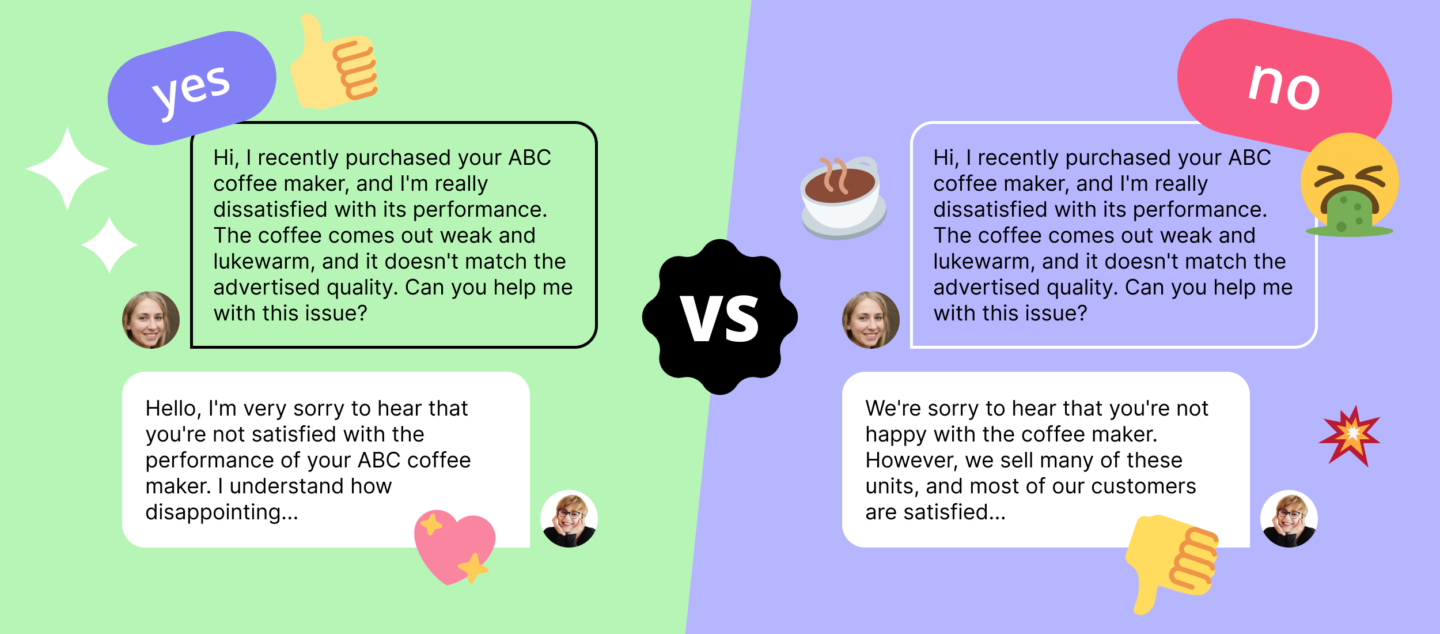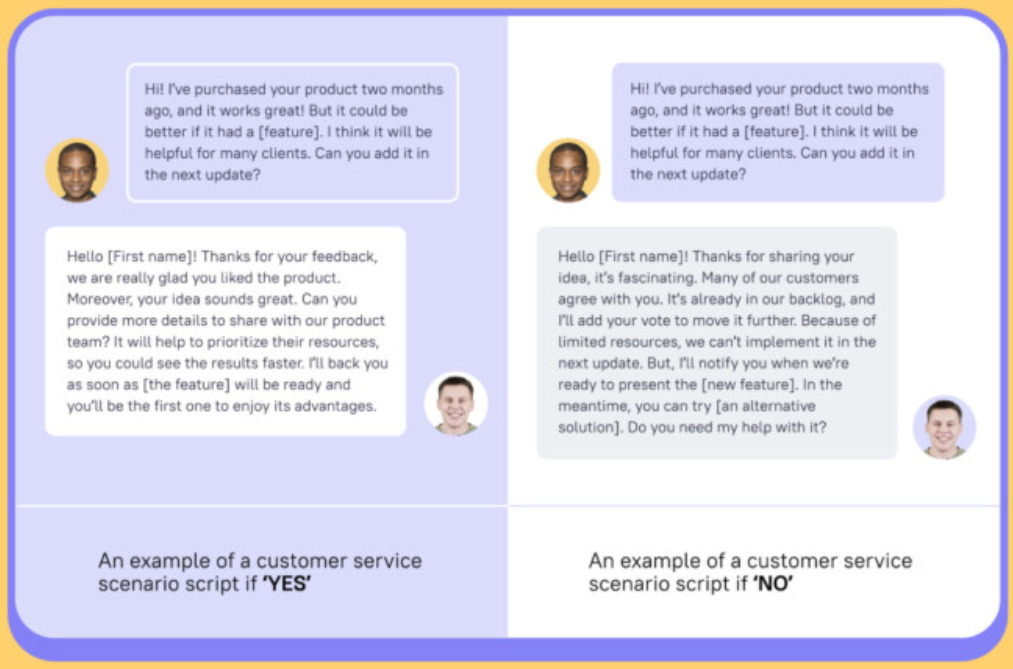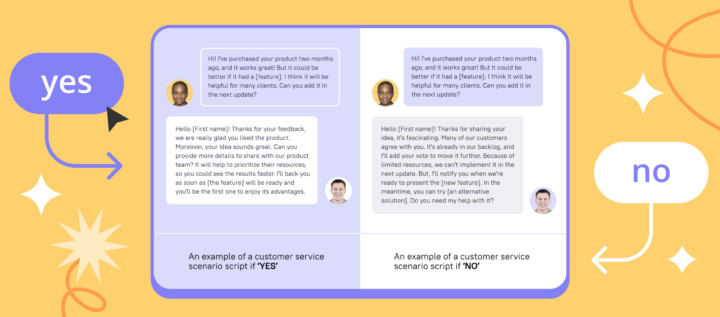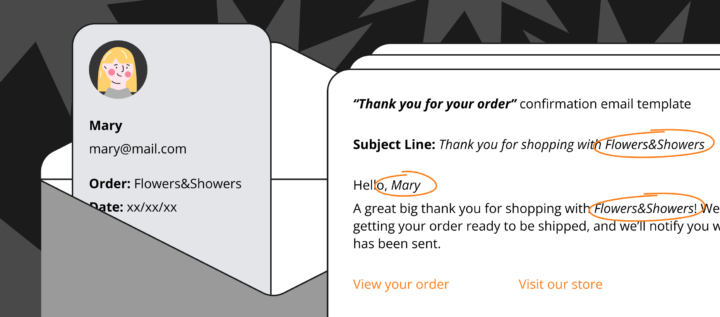Script templates and tips on dealing with a dissatisfied customer

Dissatisfied customers are individuals who have had a negative experience with a product, service, or interaction with a company. They may feel frustrated, unhappy, or disappointed with the company or its offerings, and they may express these feelings through complaints, negative reviews, or other forms of feedback.
Working with dissatisfied customers can be challenging. But it is crucial to address their concerns effectively to retain their business, maintain a positive brand reputation, and improve customer satisfaction overall.
Dissatisfied vs Angry customer
While both dissatisfied customers and angry customers have negative experiences with a company, their emotional states and the ways they express their frustrations can differ significantly. Understanding these differences is crucial for effectively addressing their concerns and finding appropriate solutions.
Dissatisfied customers:
- Level of emotion: Dissatisfied customers may be upset or disappointed, but their emotional state is generally less intense than that of angry customers.
- Communication style: They typically express their concerns in a more controlled and rational manner, focusing on the issues they faced.
- Root cause: Dissatisfaction often stems from unmet expectations, product or service failures, or negative experiences with the company.
- Resolution: Addressing the specific issues and providing a fair solution may be enough to satisfy these customers and restore their confidence in the company.
Angry customers:
- Level of emotion: Angry customers are more emotionally charged, often expressing feelings of anger, frustration, or resentment.
- Communication style: They may communicate more aggressively or emotionally, which can make it harder to identify the root cause of their concerns.
- Root cause: Anger can be triggered by various factors, including perceived disrespect, repeated negative experiences, or a strong emotional attachment to the issue.
- Resolution: In addition to addressing the specific problem, it is crucial to manage the customer’s emotions effectively. This may involve showing empathy, remaining calm, and apologizing sincerely.
In both cases, it is important to listen actively, show empathy, and offer appropriate solutions. However, when dealing with angry customers, it is particularly important to manage their emotions and maintain a calm and professional demeanor. By addressing the concerns of dissatisfied and angry customers effectively, you can turn negative experiences into opportunities for growth, ultimately fostering customer loyalty and enhancing your company’s reputation.
Read also: 17 Zendesk alternative services and 13 live chat alternatives to try this year
So how would you answer this message 👇
Example of a dissatisfied customer request
Customer: Hi, I recently purchased your ABC coffee maker, and I’m really dissatisfied with its performance. The coffee comes out weak and lukewarm, and it doesn’t match the advertised quality. Can you help me with this issue?
Bad customer service response
Support Agent: We’re sorry to hear that you’re not happy with the coffee maker. However, we sell many of these units, and most customers are satisfied. Perhaps you should try using different coffee beans or adjusting your brewing process. It could just be your personal preference.
Why such a response is bad:
- The support agent did not express empathy or understanding of the customer’s dissatisfaction. Instead, they dismissed the customer’s concerns by suggesting that most customers were happy with the product.
- The response implies that the problem might be due to the customer’s preferences or actions rather than acknowledging that the product could be at fault.
- The support agent did not offer specific troubleshooting steps or solutions to help resolve the customer’s concerns. They provided generic advice without considering the customer’s unique situation.
- The agent did not offer to investigate the issue further or provide additional support if the customer’s concerns were unresolved.
A better response would demonstrate empathy, take the customer’s concerns seriously, offer specific troubleshooting steps, and provide an opportunity for further assistance if the issue is not resolved.
Read also:
15 best lead generation services to grow your base in 2023
The 36 statistics on how chatbot for businesses grow your revenue in 2023
The secret weapon of your competitors or Why you should focus on customer service first
Here is how it can look 👇
Good customer service response
Support Agent: Hello, I’m very sorry to hear that you’re not satisfied with the performance of your ABC coffee maker. I understand how disappointing it can be when a product doesn’t meet your expectations, and I’m here to help you resolve the issue.
First, let’s try to address the weak coffee problem. It’s possible that the coffee-to-water ratio may need adjustment. Please ensure you use the recommended coffee grounds per cup of water, as stated in the user manual. Also, using freshly ground coffee beans and the correct grind size for your coffee maker can significantly improve the taste and strength of your coffee.
As for the lukewarm temperature, please check if the warming plate is functioning properly and ensure the coffee maker is set to the correct brewing temperature (usually around 195°F to 205°F). If the issue persists, there might be a problem with the heating element, which would require further investigation.
If you’ve tried these steps and are still experiencing issues, please let us know. We’re happy to assist you further and explore other options, such as a replacement or refund if necessary. Your satisfaction is our top priority, and we want to ensure you have a positive experience with our products.
Why such a response is good:
- The support agent expresses understanding and empathy for the customer’s dissatisfaction, acknowledging the customer’s concerns and feelings.
- The agent offers specific troubleshooting steps tailored to the customer’s concerns, demonstrating that they are taking the issue seriously and are committed to finding a solution.
- The response includes an offer to provide additional support if the issue is unresolved, showing that the company is dedicated to ensuring customer satisfaction.
- The agent emphasizes that customer satisfaction is a top priority, which helps to build trust and reassure the customer that their concerns are important to the company.
Read also: 10 conversion rate optimization tools to enhance your funnel and boost revenue
Best practices on dealing with dissatisfied customers
When working with a dissatisfied customer, it is essential to communicate effectively and empathetically to address their concerns and find a suitable resolution. Here are some tips for working with dissatisfied customers and using words during the interaction:
- Listen actively. Allow customers to express their concerns entirely without interruption. Pay close attention to their words and emotions, and avoid making assumptions.
Words to use: “I understand,” “I see,” “Please tell me more.”
- Empathize. Show empathy by acknowledging their feelings and frustrations. Validate their emotions and demonstrate that you care about their experience.
Words to use: “I can imagine how frustrating this must be,” “I’m sorry to hear that you’re experiencing this issue,” “That sounds very disappointing.”
- Apologize. Offer a sincere apology, even if the issue is not entirely the company’s fault. This demonstrates accountability and a willingness to make things right.
Words to use: “I apologize for the inconvenience,” “I’m sorry that our product/service did not meet your expectations,” “Please accept our sincere apologies.”
- Identify the issue. Ask probing questions to identify the core problem or concern so that you can address it effectively.
Words to use: “Could you please provide more details about the issue?”, “What specifically about the product/service has caused your dissatisfaction?”
Read also: Customer engagement strategy template to create omnichannel campaigns
- Offer a solution. After understanding the issue, offer a solution that is fair and appropriate. This may involve a refund, replacement, or other forms of compensation.
Words to use: “To resolve this issue, we can…”, “We would like to offer you…”, “To make things right, we propose…”
- Be respectful and professional. Maintain a respectful and professional tone throughout the conversation. Avoid getting defensive or argumentative, even if the customer is upset or angry.
Words to use: “Thank you for bringing this to our attention,” “We appreciate your patience as we work to resolve this issue,” “Your feedback is valuable to us.”
- Follow up. Once the problem has been resolved, follow up with the customer to ensure they are satisfied with the outcome. This helps build trust and restore their confidence in the company.
Words to use: “I wanted to follow up and ensure that the issue has been resolved to your satisfaction,” “Is there anything else we can assist you with?”
By incorporating these tips and using the suggested words when working with dissatisfied customers, you can effectively address their concerns, find suitable solutions, and turn a negative experience into a positive one, ultimately fostering customer loyalty and enhancing your company’s reputation.
Deal with complicated customer queries like a pro with our playbook of 15 tricky customer service scenarios and ready-made answers 👇
Thanks! Now check your inbox

Read also:
👉 Live Chat Best Practices: 20 Hacks to Make Customer Service Better
👉7 Best Live Chat for eCommerce: Boost Conversion on your Website
👉 Top 5 live chat mobile app: find the best fit for your business
👉 Live Chat: How Online Chat Tool Can Help Your Business
👉 20 Best Live Chat Software for your website chat service





